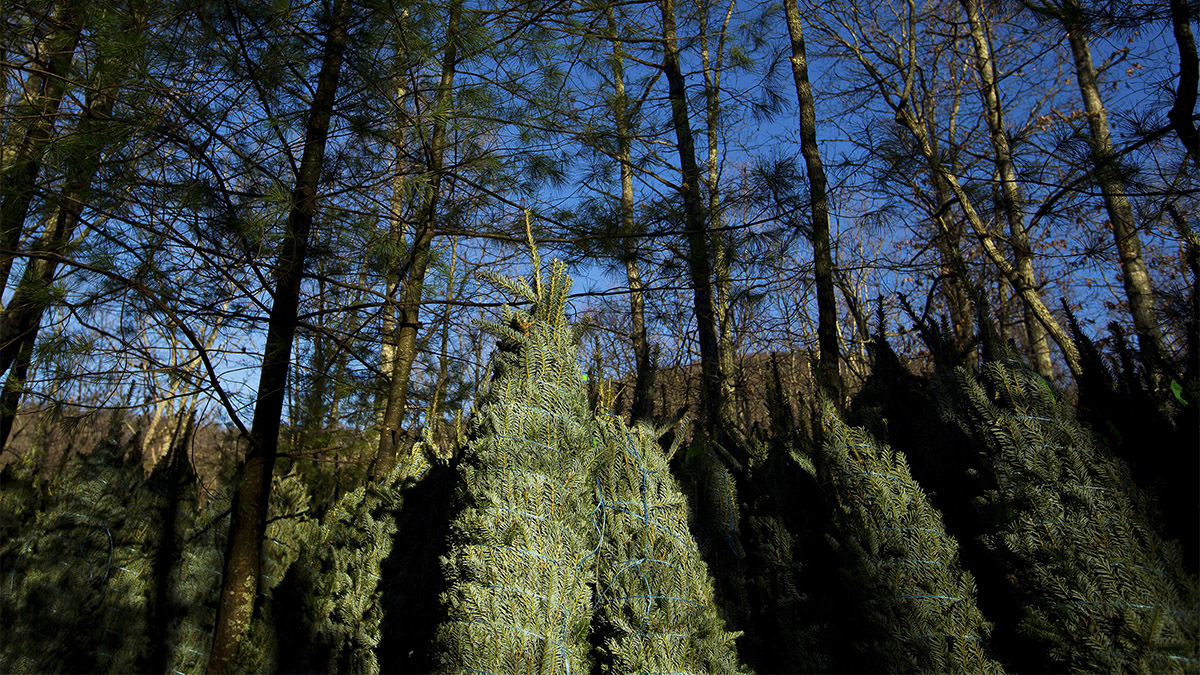As millions of Americans prepare to purchase live Christmas trees this holiday season, the industry finds itself grappling with unprecedented challenges that have tested its resilience. North Carolina, which is the second-largest producer of Christmas trees in the US after Oregon, has faced some of its most difficult years yet. The problems worsened after Hurricane Helene caused severe damage, making it even harder for this important industry to recover.
An industry weathering the storm
The Christmas tree industry in North Carolina is facing a mix of problems such as rising prices, not having enough workers and a growing issue with root rot. Hurricane Helene made things worse, causing floods that killed 95 people and damaged farms in western North Carolina. According to a Wall Street Journal report, tree farmer Waightstill Avery III of Trinity Tree Company lost 60,000 trees—one-third of his stock—along with barns, equipment and roads. These losses show just how fragile the industry is as it relies on long-term planning and steady growth.
To cope with the aftermath, many farmers like Avery have had to improvise. Damaged trees have been cut into smaller sizes and salvaged for greenery used in wreaths and garlands. The National Christmas Tree Association (NCTA) reports that approximately 21.6 million real trees were sold last year at a median price of $75. However, with Thanksgiving falling late this year, growers are under additional pressure as the shortened selling season leaves little room for adjustments.
Even growers who have their farms at high altitude had to face significant setbacks, mostly logistical, due to Hurricane Helene. Floodwaters blocked transportation routes to farms, making it even harder to recover from the damage. The Wall Street Journal also reported that Barr Evergreens, a family-owned nursery, lost more than 200,000 seedlings worth $500,000 because of the storm. The long growth cycle of Fraser fir trees—up to 10 years—makes these losses even worse as it will take many years to fully recover.
Impact Shorts
More ShortsLabour woes
North Carolina’s reliance on the H-2A visa programme for agricultural labour has added another layer of strain on growers. Many growers employ dozens of foreign workers during the busy holiday season. However, the costs associated with securing H-2A workers have increased in recent years coupled with regulatory hurdles. According to The Wall Street Journal, local communities often lack the workforce needed to handle the peak-season demands of this highly specialised industry.
Natural vs artificial trees
According to a piece in The Conversation, the natural Christmas tree market has been shrinking for decades. US Department of Agriculture (USDA) data reveals that the number of harvested trees has fallen by 30 per cent since 2002, even as the population grew by 16 per cent. Rising costs and supply chain disruptions have led some growers to reduce their output while others have opted to leave the business entirely.
Meanwhile, artificial trees continue to gain market share. According to Introspective Market Research, artificial tree imports—primarily from China—surpassed 20 million units in 2022. These trees, which are often pre-lit and scented to mimic real evergreens, appeal to consumers seeking convenience and durability. However, natural tree advocates argue that the environmental benefits of real trees, which are biodegradable and contribute to carbon sequestration, make them a better choice.
Interestingly, Canada has stepped in to fill part of the supply gap for real trees. USDA data shows that nearly 3 million natural trees were imported from Canada in 2022, providing a lifeline for US markets experiencing shortages.
Economic outlook and growth prospects
Despite the challenges, the global Christmas tree market continues to grow. Valued at $5.91 billion in 2023, the market is projected to reach $8.89 billion by 2032, growing at a compound annual growth rate (CAGR) of 4.64 per cent, according to Introspective Market Research. This growth reflects the enduring popularity of Christmas trees as a holiday staple, even as the industry adapts to changing consumer preferences and market conditions.
History and a global connect
The tradition of decorating a Christmas tree has deep historical roots that span continents and cultures. Evergreen plants symbolised eternal life in ancient pagan traditions, particularly during the winter solstice. The Egyptians, for example, adorned their homes with green palm fronds in honour of Ra, the sun god, while Romans celebrated Saturnalia with boughs of evergreen.
By the 16th century, Christians in Germany began decorating fir trees with candles, cookies and ornaments, practices often attributed to Martin Luther, who reportedly added candles to a tree to mimic the beauty of starlight. The tradition eventually spread to North America in the 18th century, where it became a cornerstone of the holiday season. According to the National Christmas Tree Association, today, the modern Christmas tree is a global phenomenon reflecting both cultural heritage and contemporary aesthetics.
For many families, purchasing a Christmas tree is more than a transaction—it’s a cherished holiday tradition. In the face of adversity, the Christmas tree remains a symbol of hope, resilience and a connection to age-old traditions.
)